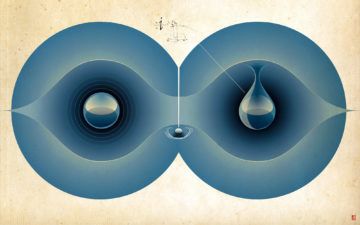 Karmela Padavic-Callaghani in Aeon (Illustration by Richard Wilkinson):
Karmela Padavic-Callaghani in Aeon (Illustration by Richard Wilkinson):
Many science students may imagine a ball rolling down a hill or a car skidding because of friction as prototypical examples of the systems physicists care about. But much of modern physics consists of searching for objects and phenomena that are virtually invisible: the tiny electrons of quantum physics and the particles hidden within strange metals of materials science along with their highly energetic counterparts that only exist briefly within giant particle colliders.
In their quest to grasp these hidden building blocks of reality scientists have looked to mathematical theories and formalism. Ideally, an unexpected experimental observation leads a physicist to a new mathematical theory, and then mathematical work on said theory leads them to new experiments and new observations. Some part of this process inevitably happens in the physicist’s mind, where symbols and numbers help make invisible theoretical ideas visible in the tangible, measurable physical world.
Sometimes, however, as in the case of imaginary numbers – that is, numbers with negative square values – mathematics manages to stay ahead of experiments for a long time. Though imaginary numbers have been integral to quantum theory since its very beginnings in the 1920s, scientists have only recently been able to find their physical signatures in experiments and empirically prove their necessity.
More here.
